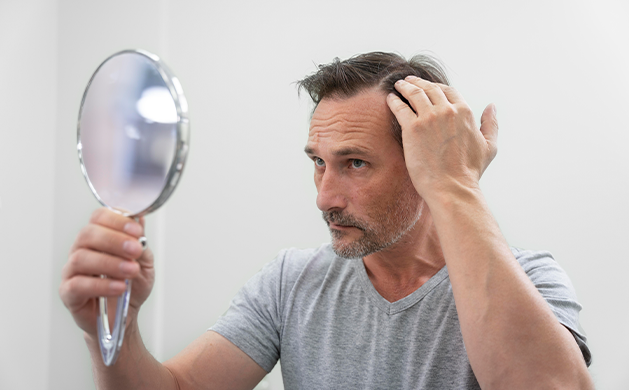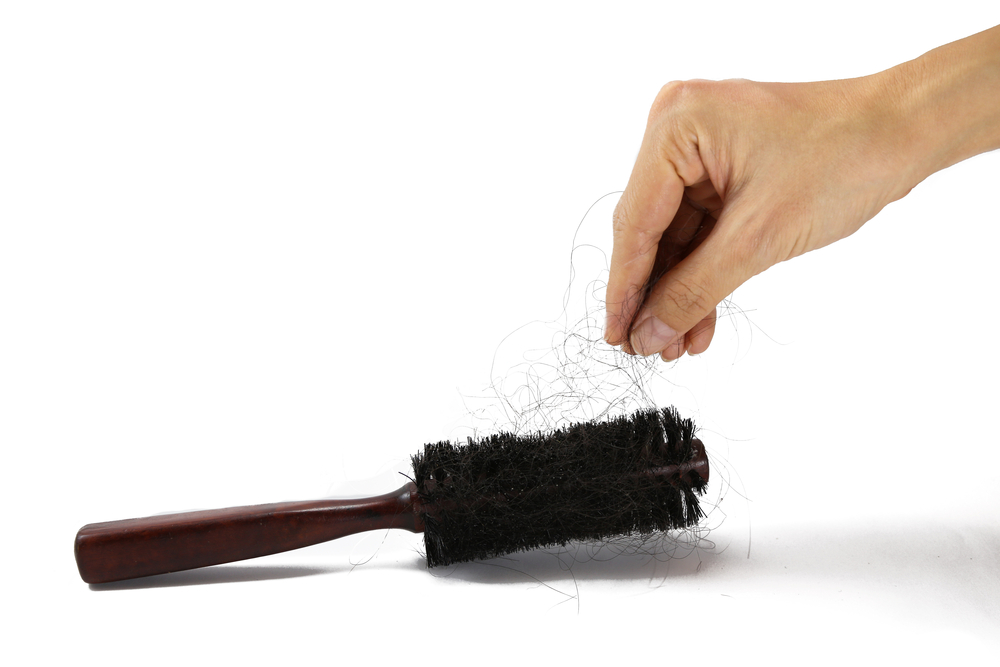Hair loss is one of the most distressing disorders for adults and children because our society unnecessarily emphasizes physical appearance. This article reviews the cause of hair loss, emphasizing the most common ones, including alopecia areata, androgenetic Alopecia, telogen effluvium, and traction alopecia.
Hair loss: An overview
Hair loss is a common issue in both men and women. It can be caused by various conditions that can be congenital or acquired. It can be temporary or permanent. Hair loss can result from genetic, hormonal changes, medical conditions, or a normal part of ageing. Anyone can lose hair on their scalp, but it is more common in men. Baldness is associated with excessive hair loss from your scalp. Hereditary hair loss with age is the common contributing factor to baldness. Some people don’t bother, while others cover it with hairstyles, makeup, scarves, or hats. And still, those concerned about their hair loss choose to treat their condition to prevent further hair loss or restore growth. Before you receive hair loss treatment, speak to your doctor related to the cause of your hair loss and treatment options. Correct diagnosis of the hair loss condition is complex and requires evaluation of clinical presentation, history, physical examination, and certain laboratory tests.
Causes & Treatment
It is typically related to one or more of the following factors. Most cases of hair loss can be categorized under three categories:
-
- Non-cicatrical alopecia
This type of hair loss is associated with chances for regrowth. They include androgenetic Alopecia, telogen effluvium, and alopecia area. This group may also include Trichotillomania (compulsive hair plucking) and Traction alopecia (caused by pulling hair). However, in chronic cases, trauma can affect the hair follicle, producing scarring and permanent hair loss.Shedding
The most common cause of hair fall or shedding is telogen effluvium, which is described as the premature conversion of growth phase hair follicles to the resting phase (telogen) of the hair growth cycle. Acute shedding was initially described after severe health conditions, childbirth, administration of heparin, and emotional distress. Other factors causing telogen effluvium include numerous drugs, endocrine diseases, severely restricted diet, surgical procedures, and anaesthesia.Ability to treat the condition, dermatologists understand the etiological factors and the differences between these disorders, which helps them reach the right diagnosis and treatment.
Alopecia may be associated with a wide variety of causes. In general, we lose 50 to 100 hair strands daily. This is not noticeable because new hair is growing at the same time. Hair loss happens when new hair doesn’t replace the ones that have fallen out, and decreased volume may be noticeable when hair density is reduced by as much as 30 to 50%. When evaluating shedding, your healthcare specialist must evaluate thyroid function. In such cases, hormonal screening is recommended to detect perimenopausal changes and the presence of excess androgen hormone.
Treatment – To treat telogen Effluvium, the causes must be treated. Patients should be reassured that the shedding is being replaced and there are increased chances of baldness.
- Non-cicatrical alopecia
-
- Androgenetic Alopecia
Androgenetic Alopecia (AGA) is a prominent central pattern of scalp alopecia induced by androgens, and it may affect genetically predisposed men and women at any time between puberty and senescence. Individuals with a strong history of androgenetic Alopecia, irrespective of sex. A common pattern in men and women is the M-pattern, characterized by the frontal recession with thinning or complete absence of hair in the temple. Another pattern in women is decreased scalp hair density in the central area, with frontal hair loss.Typical minoxidil (Mintop solution) is the first-line treatment in women. Topical formulations of Minoxidil 2% (Coverit) or 5% minoxidil (Tugain) are also used for androgenetic Alopecia in both sexes. Studies with oral Finasteride 1 mg demonstrated good results in males; however, no improvement was noted in post-menopausal females.
- Androgenetic Alopecia
-
- Alopecia areata
Alopecia areata causes isolated or recurrent patchy hair loss. Multiple patches, complete scalp hair loss and complete scalp and body hair loss may also occur.
Treatment- Intralesional injections of corticosteroids are recommended for adults with less than 50% scalp involvement. The treatment goal is to reduce inflammation.
- Alopecia areata
-
- Traction alopecia
Traction can damage the hair shaft and alter the hair growth cycle. If traction is repetitive, cicatricial Alopecia may result. Practices such as wearing ponytails, tight elastic hairbands, using heat rollers, or other devices that place extreme and repetitive stress on the scalp hair can contribute to such hair loss. This type of hair loss causes sparse hair and hair breakage in the frontal area.Trichotillomania is traction alopecia, where the patient repeatedly pulls or plucks the hair in a bizarre pattern.
When treating Alopecia, patients are advised to change their hairstyle and explain the possibility of permanent hair loss if the traction is not eliminated. Patients treated with trichotillomania require psychological evaluation and counselling. Hair loss drug such as fluoxetine is required to control compulsive hair pulling.
- Traction alopecia
-
- Cicatricial Alopecia
The type of hair loss is irreversible. The causes may include fungal or bacterial folliculitis, lichen planopilaris, and discoid lupus erythematosus. Other causes of the condition include trauma and neoplastic disease (tumours or metastatic disease).Hair loss treatments aim to prevent the process from spreading to unaffected areas. These patients should consult a dermatologist.
- Cicatricial Alopecia
-
- Hair shaft abnormalities
They produce fragile and brittle hair. The type of hair loss appears as diffuse or patchy areas of short hair and a history of hair that will not grow beyond a certain length.This type of hair loss Treatment is based on removing the cause when traumatically induced. Moreover, leave-on conditioners applied on hair fibres may increase hair strength and avoid breakage.
- Hair shaft abnormalities
Conclusion
Hair loss can be distressing and can have a significant effect on the patient’s quality of life. Hair loss may be categorized as hair shaft abnormalities or permanent or non-permanent Alopecia. Non-permanent Alopecia is the most common type of hair loss, including androgenetic Alopecia, telogen effluvium, alopecia areata, and traction alopecia.
People suffering from hair loss should consult their health care expert about diffuse or patchy hair loss. The goal is to complete regrowth with adequate treatment. Androgenetic Alopecia can be treated with a hair loss medicine, minoxidil. Once the precipitating cause is eliminated, the hair typically will regrow.



